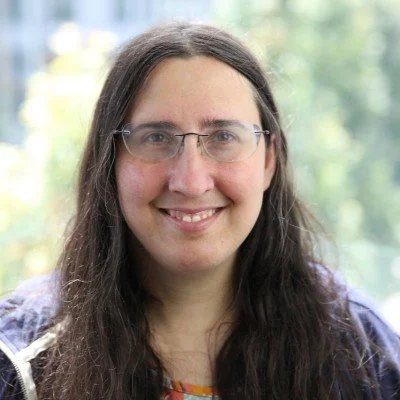Affiliate Faculty
-

Miranda Orr, PhD
Miranda’s research is focused on understanding the molecular underpinnings of Alzheimer’s disease and the effects of tau accumulation on cellular senescence and risk for chronic neurodegenerative diseases. Her studies span basic mechanistic approaches using animal and cell culture models, as well as multicenter human clinical trials. She is an associate professor at Washington University and is also committed to educating the next generation of scientists.
-

Noa Rappaport, PhD
Dr. Rappaport is a senior investigator at Phenome Health and has broad expertise and extensive experience in computational biology, machine learning and multi-omic analysis, with specific expertise in network analysis, and systems biology of human diseases. Dr. Rappaport has years of experience working with and leading teams in the development of integrated biological databases and mathematical models across disciplines including molecular biology, computer science and bioinformatics, as she was instrumental in the development and maintenance of integrated gene, disease, enhancers and pathway databases (GeneCards, MalaCards, GeneHancer, PathCards). Dr. Rappaport’s work has resulted in multiple impactful scientific publications. Dr. Rappaport is currently the PI of the Systems Biology core for the NIA funded Longevity Consortium, responsible for data integration and multi-omic analysis. She is also leading a number of multi-omic analysis projects at ISB, and a number of cross consortia collaborations. Her recent work focused on the reflection of the gut microbiome in the human metabolome and its impact on human health and longevity, as well as on developing holistic health biomarkers (biological age, biological BMI). See https://phenomehealth.org/c-suite/noa-rappaport-phd for more information
-

Dr. Victor Luna
Dr. Victor Luna is an Assistant Professor of Neural Sciences in the Alzheimer’s Center at Temple University, Lewis Katz School of Medicine. His research investigates the neurobiology of cognitive and affective aging, specifically the role of synaptic aging. Victor aims to identify molecular mechanisms that rejuvenate synaptic function in the aged brain, with a clear view towards translating these findings to pharmacological treatments that could rescue cognitive and affective impairments due to aging and dementia. He employs an integrative approach where: 1) translatable memory impairments are modeled in aged mice, 2) underlying synaptic mechanisms are identified using electrophysiology, optogenetics, and chemogenetics, and 3) their therapeutic potential is assessed using targeted gene manipulation and in vivo photopharmacology. Dr. Luna has an especially strong background using in vivo and ex vivo electrophysiology to study synaptic transmission in the peripheral and central nervous system. Read more.
-

Jeffrey Carroll, PhD
While Jeff was serving in the U.S. Army in Kosovo, his mother was diagnosed with Huntington’s disease – a fatal, incurable, genetically inherited neurodegenerative disease that had killed his grandmother. After he learned that he had inherited the genetic abnormality that causes Huntington’s, Jeff embarked on a career as a neuroscientist that has included postdoctoral training at Harvard and a post at Western Washington University, where he is Assistant Professor of Neuroscience and one of the country’s leading Huntington’s researchers. In work funded by the CHDI foundation (http://chdifoundation.org) he and his and his group will be conducting preclinical trials of a promising new gene-silencing approach to Huntington’s disease at MRI, using mice genetically engineered to model the disease. Read more.
